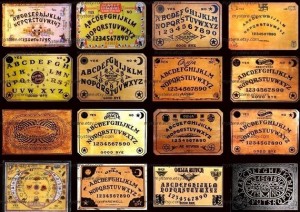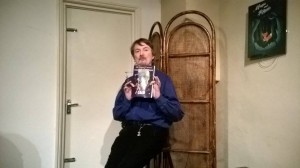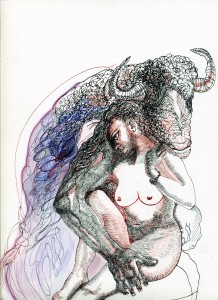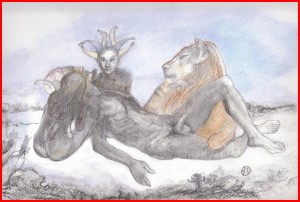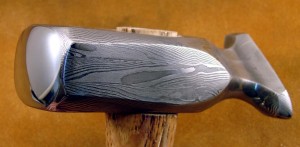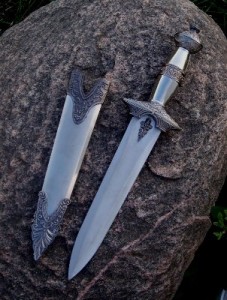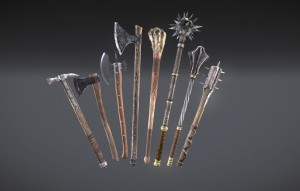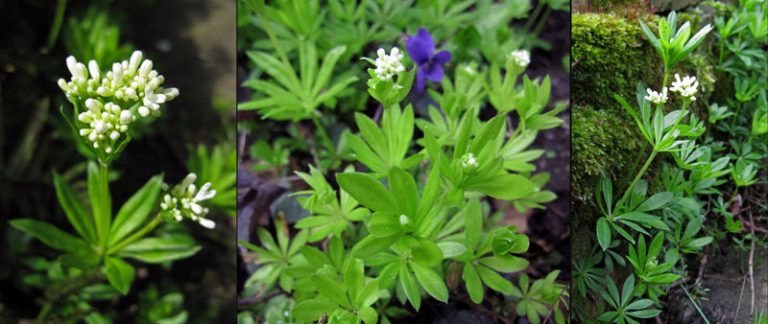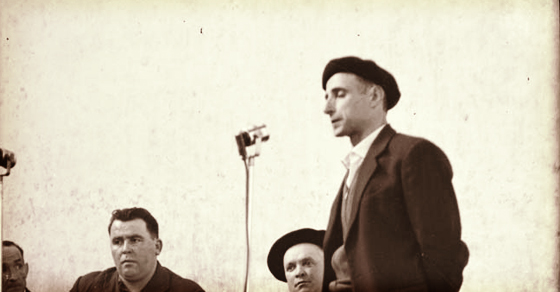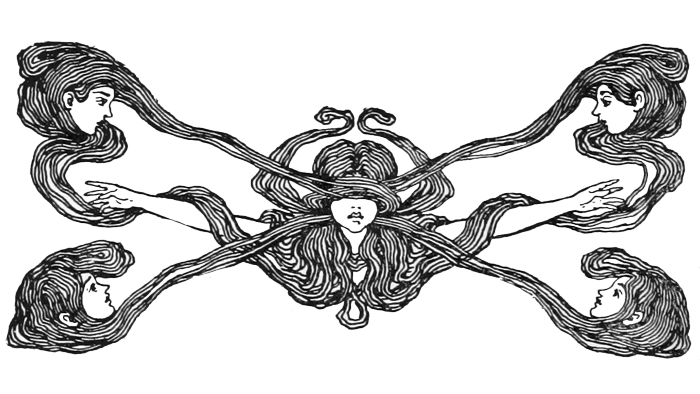Dit stuk gaat over mijn visie op regels en hoe ik daar mee omga. Een disclaimer: dit representeert alleen mijn visie en niet per se die van Silver Circle en/of Wiccan Rede of zelfs heksen in het algemeen. Ik tracht niet ‘de waarheid’ te weten maar ik hoop met dit stuk jullie te inspireren om over je eigen regels na te denken.
Mijn eigen regels
Wie mij een beetje kent weet dat ik gek ben op regels. Ik hou van structuur en ik weet graag waar ik aan toe ben. Waar ik echter nog blijer van word is de regels buigen naar mijn eigen leven zodat ik me er zelf helemaal comfortabel bij voel. Ik zie regels als een soort rode draad en zolang het niemand schaadt vind ik dat er best wel eens van afgeweken kan worden.
In mijn pubertijd week ik wel wat vaker van de regels af. Ik denk dat elk kind de grenzen aftast van wat de ouders aan regels opleggen. En er soms gewoon keihard overheen banjert. Naarmate ik ouder word heb ik mijn eigen set aan regels ontwikkeld, ook wel normen en waarden of principes genoemd. Ik probeer me hier zoveel mogelijk aan te houden maar ook ik ga wel eens over de schreef. Wat prima is want hiermee toets ik de waarde van mijn eigen regels: “ben ik het hier nog wel mee eens?”.
Regels binnen Wicca
Wanneer iemand voor het eerst met Wicca in aanraking komt, of er dingen over opzoekt op het internet, zal het al snel duidelijk worden dat er maar erg weinig regels zijn. Waar veel andere religies hele duidelijke leefregels hebben moet een heks het doen met een vage bedoeling.
De regels binnen Wicca
- Doe wat je wilt mits je niets of niemand schaadt.
- Dat wat je doet komt drie keer bij je terug.
- Wees voorzichtig met wat je vraagt. Het zou wel eens uit kunnen komen.
Vrijwel iedereen die deze regels leest zal direct bepaalde associaties hebben en instinctief aanvoelen wat ermee bedoeld wordt. Tot het over de grijze gebieden gaat. En over de grijze gebieden, dáár wil ik het over hebben.
Heksen hebben macht. En met macht komt verantwoordelijkheid. Waar ligt jouw eigen ethische grens en hoe creatief ga je zelf met deze regels om?
“Doe wat je wilt mits je niets of niemand schaadt.”
Hoppa! Bam! Deze regel lijkt zo enorm duidelijk op het eerste gezicht. En voor een hoop situaties is het dat ook. Boos zijn op iemand en iemand dood wensen is niet handig. Een ritueel voor je planten zodat ze goed groeien en een prachtige bloemenzee opleveren is prima. Toch?
Bij deze voorbeelden is het vrij zwart/wit en duidelijk wat wel of niet oké is. Maar wie bepaalt wat schadelijk is voor een ander? Het is een vrij standaard opvatting dat spreuken om iemand verliefd te laten worden inbreuk maken op deze regel. Daarmee beïnvloed je een ander zijn of haar vrije wil en dat is niet zoals het hoort.
Maar hoe zit het met situaties waarbij de gevolgen een stuk minder direct zijn? Kun je bijvoorbeeld magisch werk doen voor iemand die zelf geen zeggenschap uit kan oefenen, zoals een jong kind of iemand die in een coma ligt? Als je een ritueel doet voor meer financiële ruimte in je leven, kun je daarvan de gevolgen overzien? Waar trek je voor jezelf de grens?
Voor mij is het duidelijk. Ik vraag aan de persoon (voor zover dat gaat) of ik werk mag doen. Als iemand niet met magie bezig is dan vraag ik het bijvoorbeeld in de trant van “zal ik een kaarsje voor je branden?”. Ik zal geen uitgebreide rituelen doen tenzij ik daar nadrukkelijke toestemming voor heb. En zelfs met die zekerheid zal ik altijd in mijn achterhoofd houden dat als het niet zo hoort te zijn dat het universum de eigen stroom van gebeurtenissen wel zal laten gebeuren.
Ik zie magisch werk als het werken met een rivier. De energie van het universum is als een stroom water die de zwaartekracht volgt. Met magisch werk kun je stenen in die stroom leggen zodat het water net een ander pad zal volgen. Of een dam bouwen zodat het water een bepaalde plek zal vermijden. Bouw je een dam op een plek die er niet geschikt voor is dan zal de boel overstromen of de dam vernielen.
Ik probeer zo goed mogelijk de gevolgen te overzien van wat ik doe en ik beperk mezelf vrijwel altijd tot globale wensen zoals iemand meer kracht geven om met een situatie om te gaan in plaats van de situatie zelf te willen veranderen. Wanneer iemand bijvoorbeeld liefdesverdriet heeft zal ik niet proberen de oorzaak van de pijn weg te nemen, maar zelfliefde, compassie en ondersteuning.
Dat wat je doet komt drie keer bij je terug.
Persoonlijk vind ik dit de makkelijkste regel. “Wie goed doet, goed ontmoet”. Wanneer je intenties zuiver en goed zijn komt dit op een of andere manier bij je terug. Voor mij heeft dit niet eens zozeer met magie te maken als wel met het dagelijkse leven. Hoeveel mensen staan er dagelijks in de rij bij de supermarkt om de caissière af te snauwen wanneer ze niet snel genoeg het wisselgeld uittelt? Wat is het directe effect hiervan? Je voelt je na afloop misschien schuldig, je zit met een nare energie om je heen die je nog best een tijdje kan beïnvloeden. Wanneer je dezelfde dame met een glimlach benadert voelt de sfeer direct anders en zul je je ook direct anders voelen over jezelf. Ditzelfde geldt voor magisch werk. Houd je werk positief, hoe zwaar het onderwerp ook kan zijn.
Wees voorzichtig met wat je vraagt. Het zou wel eens uit kunnen komen.
De meeste mensen kennen het voorbeeld wel van iemand die een kat kwijt was en magisch werk deed zodat de kat terugkwam. Er was echter niet specifiek genoeg gevraagd om welke kat het ging zodat ineens de tuin overspoeld werd met allerlei zwerfkatten uit de buurt. Een typisch voorbeeld van “wees duidelijk in je bedoeling”. Een ritueel doen puur voor financieel gewin zou erop uit draaien dat je een erfenis krijgt. Wel het financiële gewin, niet echt op de manier die je zou willen. De beste manier om hier mee om te gaan is heel duidelijk zijn in wat je wilt bereiken. Wil je bijvoorbeeld een groter huis, kijk hoe je dit zonder magisch werk zou bereiken en geef hier vervolgens magische ondersteuning aan. Heb je een andere baan nodig kijk dan hoe je jezelf aantrekkelijker kunt maken voor een nieuwe werkgever. Zoek je een nieuwe partner? Ga dan naar een singlesmeeting waarbij je bijvoorbeeld van te voren wat werk kunt doen dat áls de juiste persoon voor jou er is hij of zij misschien toevallig aan dezelfde tafel komt te zitten.
Magisch werk en leefregels
Wat voor mij een essentieel ding is binnen wicca is dat magisch werk ondersteunend moet zijn. Het werk dat je in rituelen doet moet een reflectie zijn van wat je in je dagelijkse leven doet. Je kunt best een ritueel doen zodat iemand zich veilig en geborgen voelt, maar je zal toch ook in het aardse leven voor de persoon in kwestie moeten zorgen op zo’n moment. Net als werk voor een nieuwe baan. Wanneer je op je kont blijft zitten en geen sollicitaties de deur uit stuurt zal er hoogstwaarschijnlijk niets gebeuren.
Je bent niet alleen een heks tijdens rituelen maar juist ook gedurende de rest van de tijd. En voor mij betekent dit dat ik in mijn dagelijkse leven zoveel mogelijk de regels probeer te volgen. Met name het stuk “doe niets wat een ander schaadt” is daarbij lastig. Want vrijwel alles wat je als mens doet zal een ander op een of andere manier schaden. Een T-shirtje bij de H&M kopen zorgt voor kinderarbeid. In een auto rijden zorgt voor schade aan het milieu. Anticonceptie slikken zorgt voor hormonen in het drinkwater. Een boterham met salami eten zorgt voor dierenleed.
Waar leg je voor jezelf de grens? Voor mij is de regel “doe zo goed als je kunt”. Iedereen heeft beperkingen op het gebied van tijd, energie en geld. Kijk voor jezelf wat haalbaar is en probeer het telkens een stukje beter te doen. Ik probeer zelf zo min mogelijk vlees te eten of dierlijke producten te gebruiken. Voor mij is dat een hele grote bijdrage aan het leven op aarde. Voor een ander zal dat bijvoorbeeld vrijwilligerswerk kunnen zijn. Of eens de fiets pakken in plaats van de auto. Of oprecht naar die enorm stomme buurman glimlachen ondanks het feit dat hij tot 3 uur ’s nachts herrie heeft gemaakt.
Wanneer mag je de regels net wat harder ombuigen?
Regels gaan wat mij betreft de deur uit in geval van nood. Word je op straat aangevallen dan lijkt het me niet meer dan logisch dat wanneer je in een reflex iemand een schop geeft dit volledig oké is. Zelfverdediging heet dat. Het wordt een ander verhaal wanneer je de tijd hebt om rustig na te denken over wat de consequenties zijn. Wraak is niet iets om mee bezig te zijn, vind ik zelf. Je wordt er niet beter van en een ander doelbewust pijn doen zal geen prettige effecten opleveren. Ook als iemand in levensgevaar is gaan regels de deur uit bij mij. Ik zal dan niet aan iemand kunnen vragen “goh, mag ik even wat magisch werk doen voor je?” Wanneer ik op een ambulance wacht terwijl iemand zwaargewond is dan doe ik magisch werk. Zowel voor mezelf (niet in paniek raken, helder na kunnen denken etc.) als voor de ander (pijnverlichting, angst wegnemen etc.). Gelukkig komen deze situaties nauwelijks voor en zul je 99% van de tijd een moment hebben om te overdenken wat je daadwerkelijk aan het doen bent.
Conclusie en stellingen
Met regelmatig je eigen gedrag te evalueren zul je erachter komen wat voor jou wel of niet oké is. Sommige covens hebben bepaalde regels die je vanzelf zult horen wanneer je je bij een groep wilt voegen. Principes kunnen verschuiven en je eigen mening zal aan de hand van je ervaringen steeds verder uitkristalliseren. Hieronder zal ik een aantal stellingen plaatsen zodat je zelf nog wat verder na kunt denken over wat jouw eigen standpunten zijn. Ook leuk om als discussiepunten te gebruiken binnen een groep! 😉
- Magisch werk voor kinderen of dieren is altijd goed om te doen.
- Als heks zou je uit principieel standpunt geen enkel dier mogen gebruiken voor eigen gewin. Dus geen vlees eten of dierlijke producten gebruiken (melk, kaas, ei, leer etc).
- Je moet als heks je eigen negatieve emoties zoveel mogelijk onder controle hebben.
- Een ritueel voor persoonlijk gewin is per definitie slecht.
- Aanval is soms de beste verdediging.
- Je moet comfort inleveren om zo zuiver mogelijk te kunnen leven.
Bedankt voor het lezen en laat vooral even weten op welke punten je het al dan niet eens bent met me en waarom. Ik ben benieuwd!

